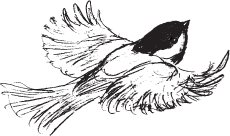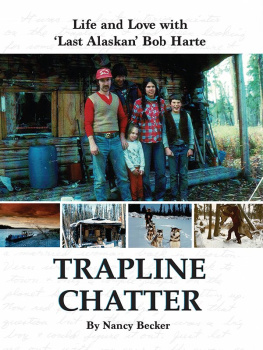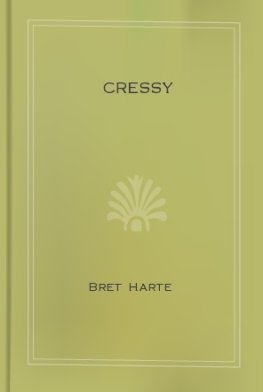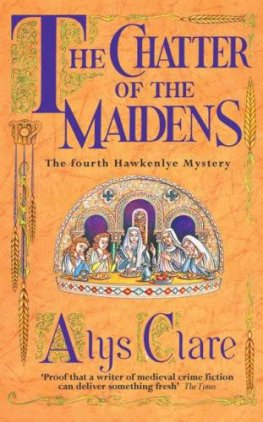Nancy Becker - Trapline Chatter: Life and Love with Last Alaskan Bob Harte
Here you can read online Nancy Becker - Trapline Chatter: Life and Love with Last Alaskan Bob Harte full text of the book (entire story) in english for free. Download pdf and epub, get meaning, cover and reviews about this ebook. year: 2020, publisher: Publication Consultants, genre: Home and family. Description of the work, (preface) as well as reviews are available. Best literature library LitArk.com created for fans of good reading and offers a wide selection of genres:
Romance novel
Science fiction
Adventure
Detective
Science
History
Home and family
Prose
Art
Politics
Computer
Non-fiction
Religion
Business
Children
Humor
Choose a favorite category and find really read worthwhile books. Enjoy immersion in the world of imagination, feel the emotions of the characters or learn something new for yourself, make an fascinating discovery.
- Book:Trapline Chatter: Life and Love with Last Alaskan Bob Harte
- Author:
- Publisher:Publication Consultants
- Genre:
- Year:2020
- Rating:4 / 5
- Favourites:Add to favourites
- Your mark:
- 80
- 1
- 2
- 3
- 4
- 5
Trapline Chatter: Life and Love with Last Alaskan Bob Harte: summary, description and annotation
We offer to read an annotation, description, summary or preface (depends on what the author of the book "Trapline Chatter: Life and Love with Last Alaskan Bob Harte" wrote himself). If you haven't found the necessary information about the book — write in the comments, we will try to find it.
Nancy Becker: author's other books
Who wrote Trapline Chatter: Life and Love with Last Alaskan Bob Harte? Find out the surname, the name of the author of the book and a list of all author's works by series.
Trapline Chatter: Life and Love with Last Alaskan Bob Harte — read online for free the complete book (whole text) full work
Below is the text of the book, divided by pages. System saving the place of the last page read, allows you to conveniently read the book "Trapline Chatter: Life and Love with Last Alaskan Bob Harte" online for free, without having to search again every time where you left off. Put a bookmark, and you can go to the page where you finished reading at any time.
Font size:
Interval:
Bookmark:
TRAPLINE CHATTER
Life and Love with Last Alaskan Bob Harte
By Nancy Becker

PO Box 221974 Anchorage, Alaska 99522-1974
ISBN Number: 978-1-59433-940-0
eBook ISBN Number: 978-1-59433-941-7
Library of Congress Catalog Card Number: 2020904597
Copyright 2020 Nancy Becker
First Edition 2020
All rights reserved, including the right of reproduction in any form, or by any mechanical or electronic means including photocopying or recording, or by any information storage or retrieval system, in whole or in part in any form, and in any case not without the written permission of the author and publisher.
Manufactured in the United States of America

This book was written in celebration of
nancydancingbird
&
the spirit of Bob Harte
Foreword
By Bill Pfisterer
Retired Ethnographer:
Shandaa In My Lifetime and Kaiiroondak Behind the Willows
The Hudson Bay Company opened parts of Alaska to trading and trapping in the late 1840s. Fort Yukon was founded in 1847 by Alexander Murray and the company established trade there with local people. The area was rich in furs and Gwichin people were happy to have access to guns, knives and beads.
In 1867 Alaska was purchased by the United States from Russia and it was discovered that Fort Yukon was in US territory. The trading post was moved up the Porcupine River to a site above what is now Canyon Village. This site also proved to belong to the new owners of the country and the British Hudson Bay traders moved again to what is now known as Old Rampart. Finally the post was established at what is now called Rampart House or New Rampart. The actual US/ Canadian border runs through this townsite.
Non Indian trappers were attracted to the area because of the abundance and high quality of the fur and began to settle along the Porcupine and its tributaries. A hunting, fishing, trapping lifestyle evolved which consisted of living in remote areas in the winter, traveling to a trading post in the spring, fishing for salmon in the summer and returning to remote trapping areas in the fall with a winters supply of fish and other foods. Spending summer in settlements was an important part of this lifestyle. It gave folks who spent months often alone in remote places an opportunity to recharge their batteries and reestablish human contact as well as get supplies ready for the next trapping season. In the late summer people moved up rivers by track lining boats before the introduction of gasoline engines.
By the end of the second world war this lifestyle had come to an end. Rampart House was closed and the village deserted. Old Native people had died or moved to town when there was no longer anyone to help care for them in the small villages along the Porcupine. The number of trappers living alone in small cabins on traplines had diminished. Now some trappers were living in larger villages and running traplines closer to town. Only a few, mostly non-Native trappers, spent their year involved in a what would be called a traditional trappers lifestyle. Bob Harte was one of those.
It takes a large area to support a successful trapline. The area encompassed by the Yukon River on the south, the Brooks Range on the north, the US/ Canadian border on the east and the Chandalar River on the west is larger than the state of New York. Bobs trapping area covered a small part of this. Yet when a fellow trapper moved in 100 miles below Bobs cabin this trapper was informed that he was crowding Bob.
Bob arrived in Fort Yukon in the late summer of 1974. It was noted that he arrived with a good looking dog and a beautiful Aleut woman. The beautiful Aleut woman left in the middle of that first winter but the dog remained. No one blamed the beautiful lady. Living on a trapline is an often lonely and hard life.
That first fall Bob was flown by bush plane into a burned over area. The fire had forced most of the game and fur animals out of the area. Bob lived in small cabin he had built before heavy snows came. The cabin was low and partially dug into the ground. During the winter a grizzly bear that had not hibernated tried to get at Bob through the cabin roof. One of Bobs dogs raised the alarm and Bob rushed outside only to be met by the bear. Only one lived to tell the story and it was not the bear. Those bears are called ice bears by local folks since their fur coats are often covered by ice like armor. This bear was starving and desperate. To make matters worse that very cold winter the pilot who was suppose to pick Bob up before Christmas had left town and had only told one other trapper the approximate location of Bobs camp. Luckily Andy Fairfield, a local minister, flew out and found Bob.
The following year Bob moved to an established trapline on the Coleen River and built a new cabin. This trapline was where he spent winters for most of the rest of his life. He had several trapline trails branching off on tributaries of the Coleen. For many years he trapped with sled dogs and then switched to a snow machine in later years. Trapline trails are narrow paths through the woods and over frozen lakes. Many times they can only be traveled by foot. Bob spent many winters traveling more than 10 miles a day by snowshoes in extremely cold weather checking and setting traps. Then his evenings were spent skinning his catch and preparing for the next day. Often the only human speech he heard came in the evening when he listened to Trapline Chatter on the radio station KJNP.
Bob always came to Fort Yukon in his younger days in the summers and rented a cabin there. He usually came to town for a brief stay in the winter also. Bob was known as a hard worker. His father was a stone mason and Bob grew up accustomed to hard labor. He was very strong and determined when working on projects. He was a skilled woodworker as well as a woodsman. His furs were well skinned and stretched and commanded the best prices.
Trappers protect their traplines for it is their livelihood. Bob was no exception. I witnessed one incident when someone attempted to claim Bobs trapline. A young fellow came into the yard at the cabin where Bob was staying for the summer and said that Bob was on this trapline. Bob reviewed how he came to be rightfully on his trapline. A fight followed and Bob wrestled his accuser to the ground. Bob held him on the ground and said, Say uncle.
The response came, Uncle.
Bob said, Now this is over between us. If you agree say uncle.
Uncle was repeated again and the fight was over.
Bob was always pleasant to be around, and ladies who knew Bob commented that, Bob is always a gentleman. I always saw Bob as belonging to a different group of people in our generation. Native people of Alaska are skilled woodsmen. They are at home in the woods and can live comfortably no matter the weather. There is however a small, unique group of non-native men and women who are drawn to wild areas where grizzly bear tracks might well cover their footprints over unmapped trails. It is great to realize that these folks still exist in the early part of the 21st century. They are the last of the mountain men and women.
Acknowledgments
Writing a book was more difficult and more rewarding than I could have ever imagined. None of this memoir could have been possible without my editor and new friend, Brandi Jo Nyberg. Thank you, Brandi Jo, for being the guiding light that extracted my story. Also, a very special thank you to all the writers at the University of Alaska Writing Center, who helped transcribe my story and naturally open up the writing process for me.
Next pageFont size:
Interval:
Bookmark:
Similar books «Trapline Chatter: Life and Love with Last Alaskan Bob Harte»
Look at similar books to Trapline Chatter: Life and Love with Last Alaskan Bob Harte. We have selected literature similar in name and meaning in the hope of providing readers with more options to find new, interesting, not yet read works.
Discussion, reviews of the book Trapline Chatter: Life and Love with Last Alaskan Bob Harte and just readers' own opinions. Leave your comments, write what you think about the work, its meaning or the main characters. Specify what exactly you liked and what you didn't like, and why you think so.











